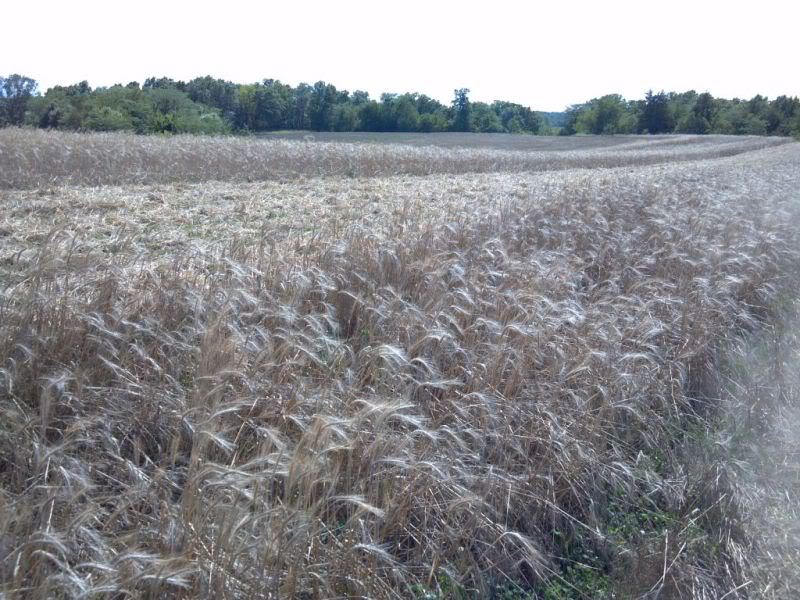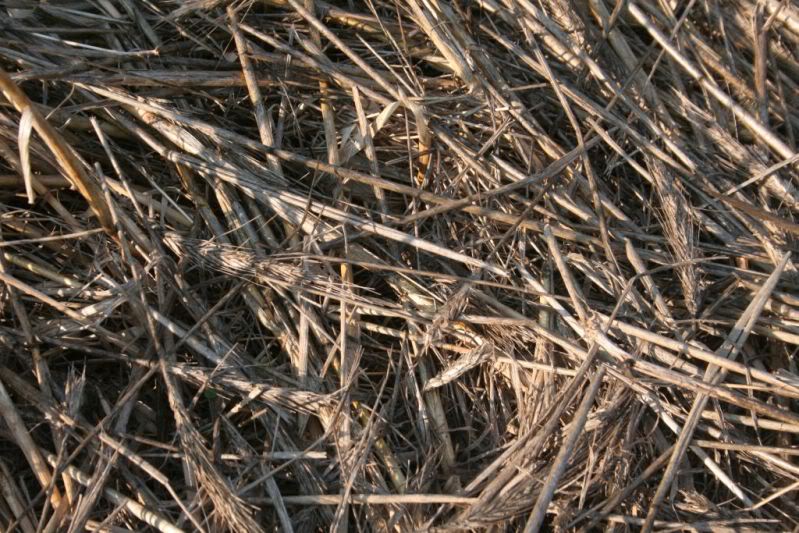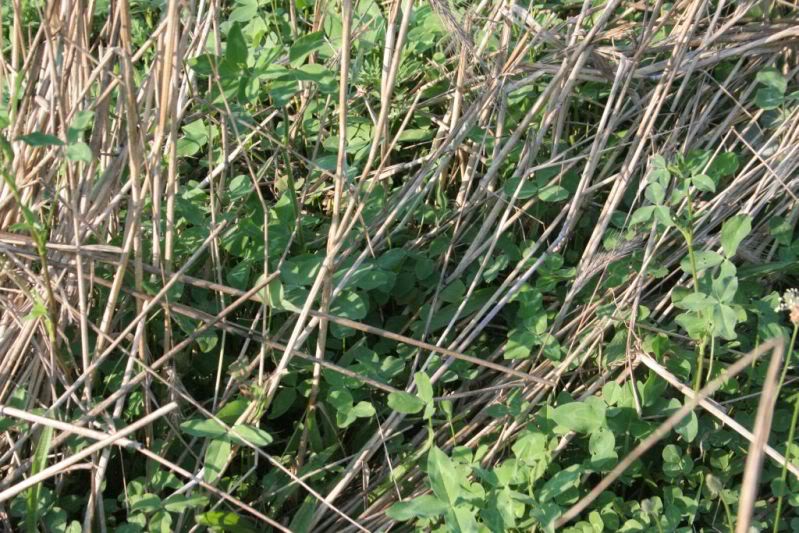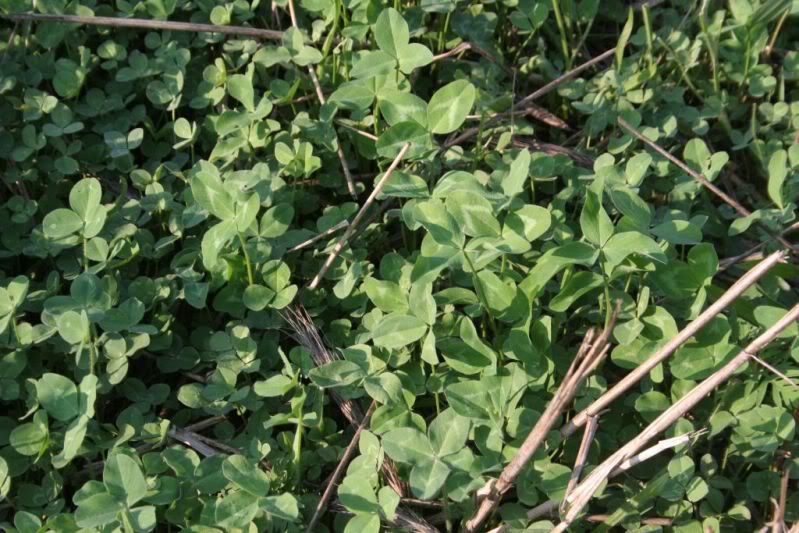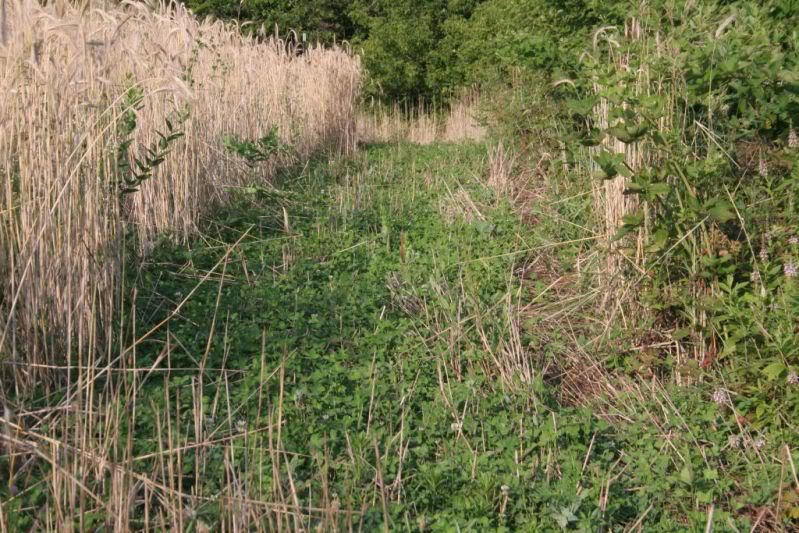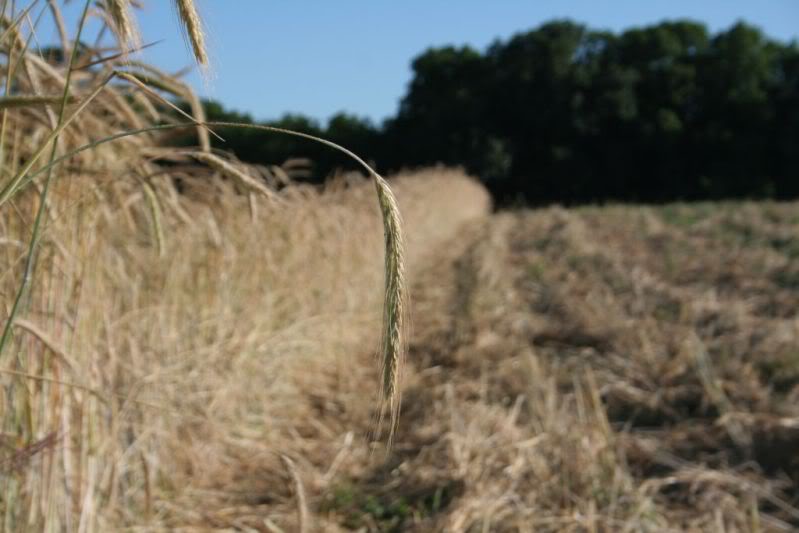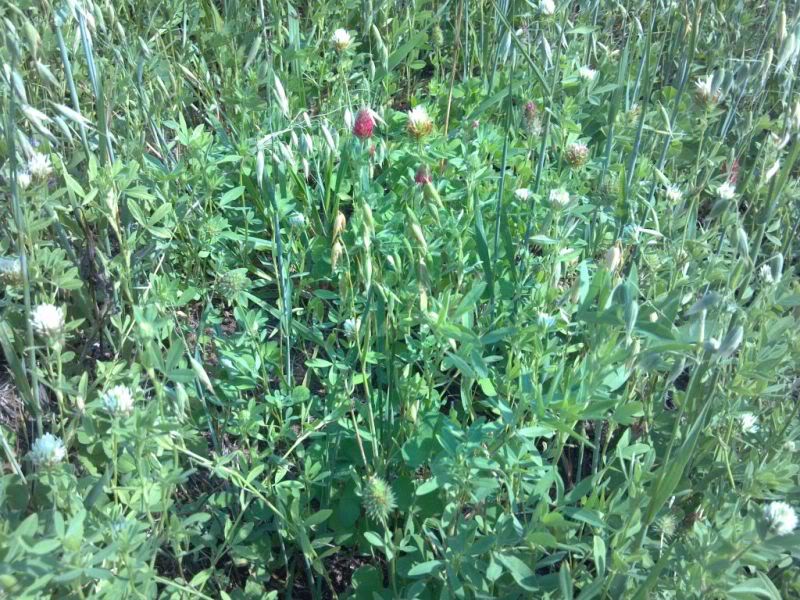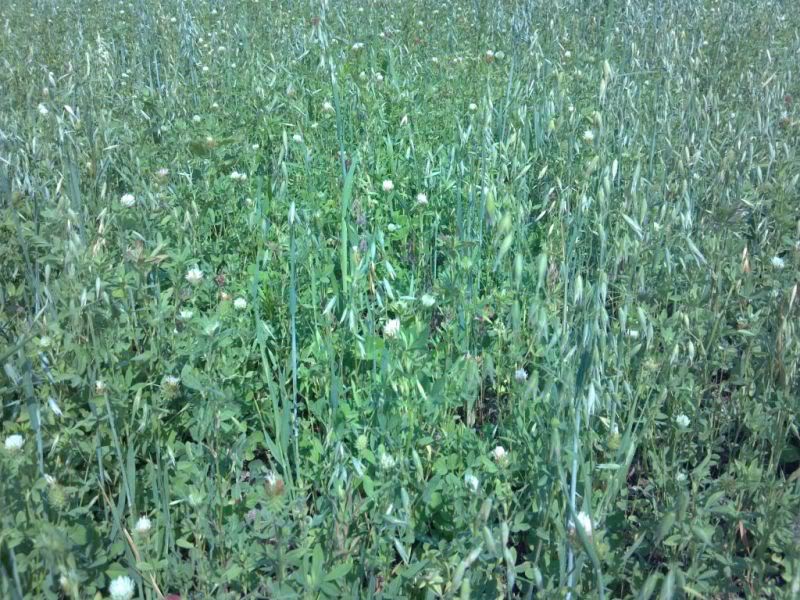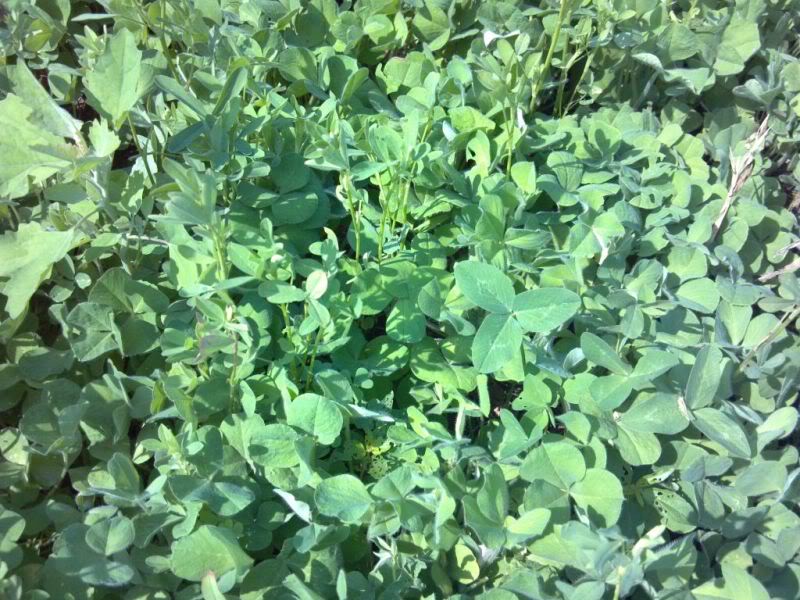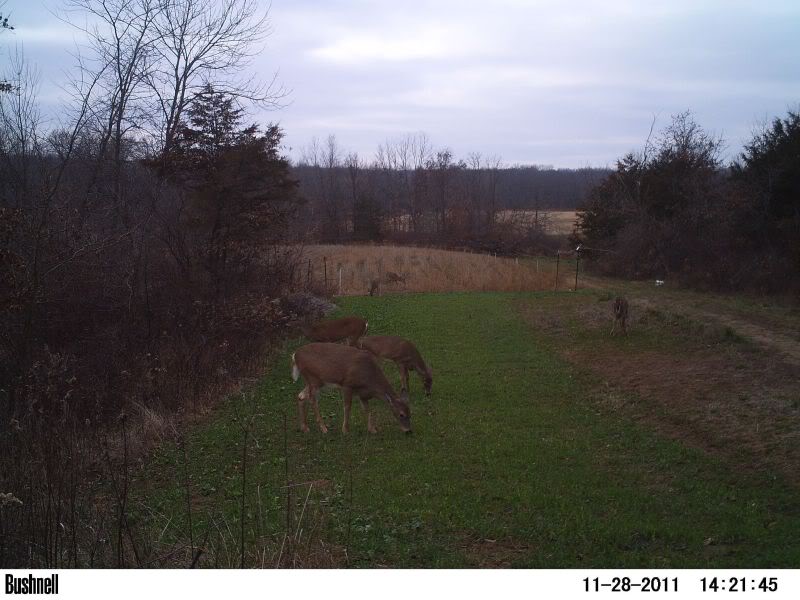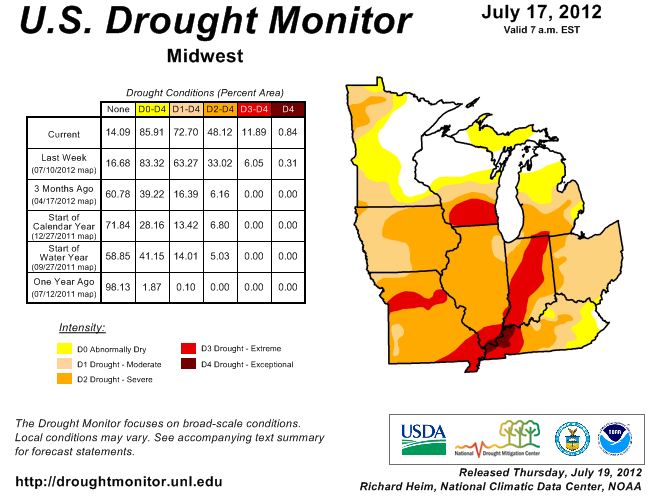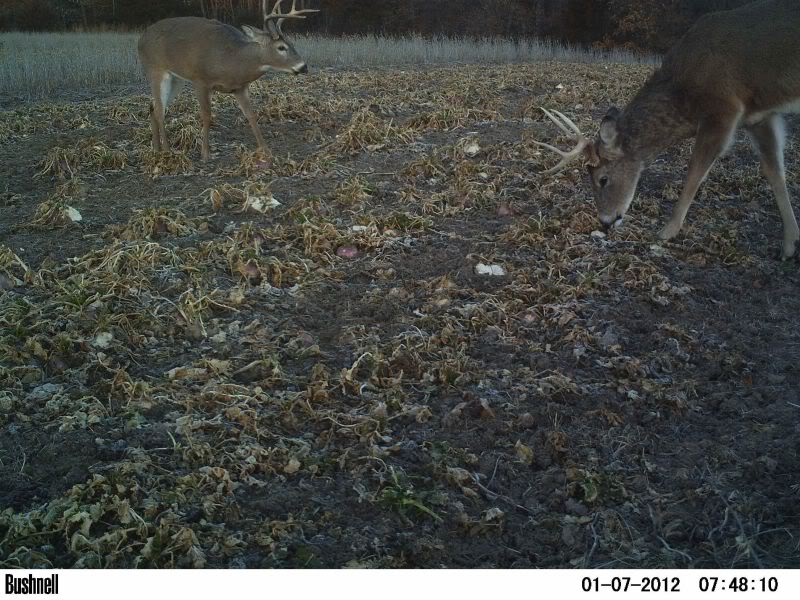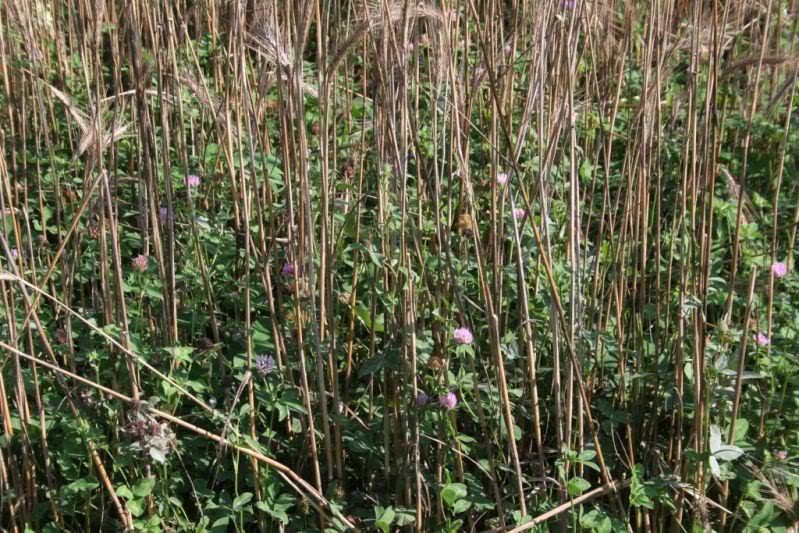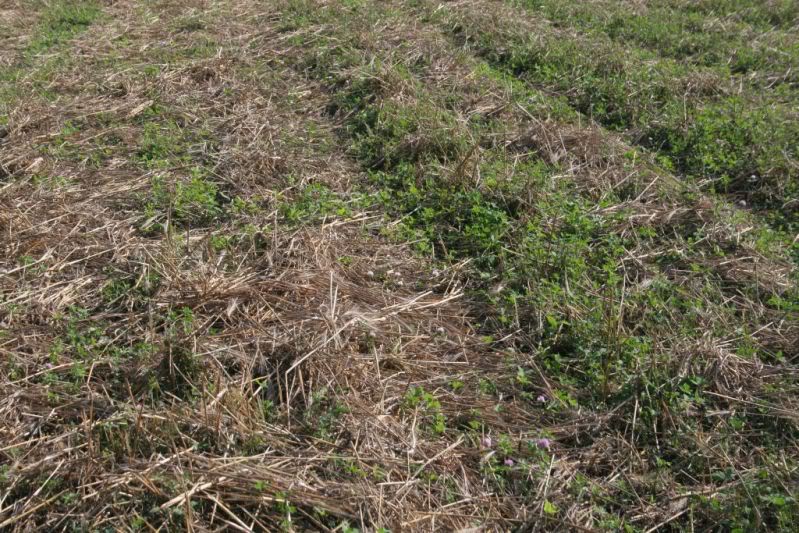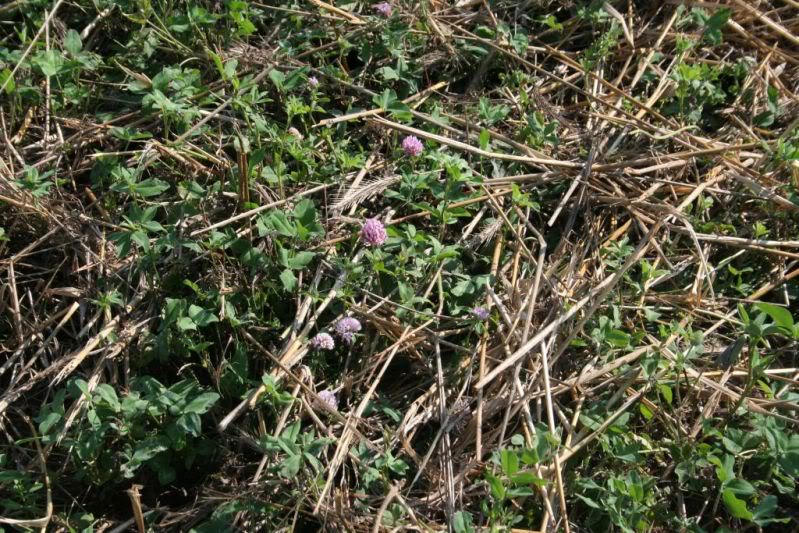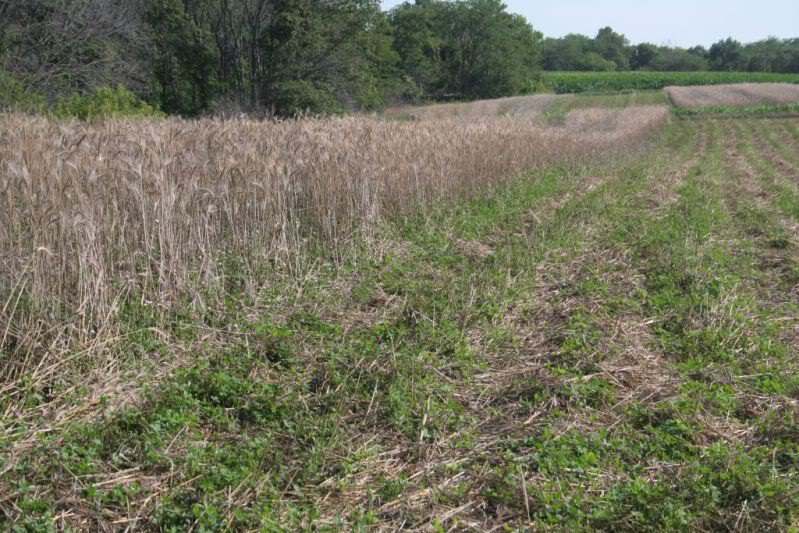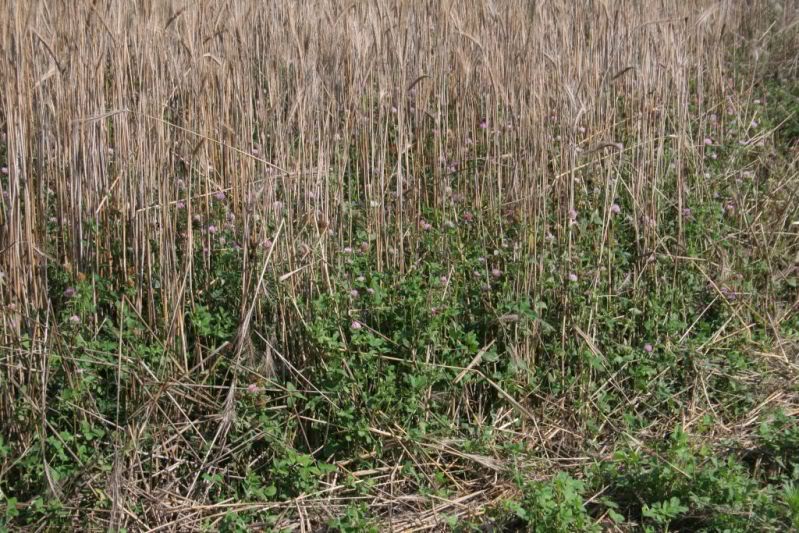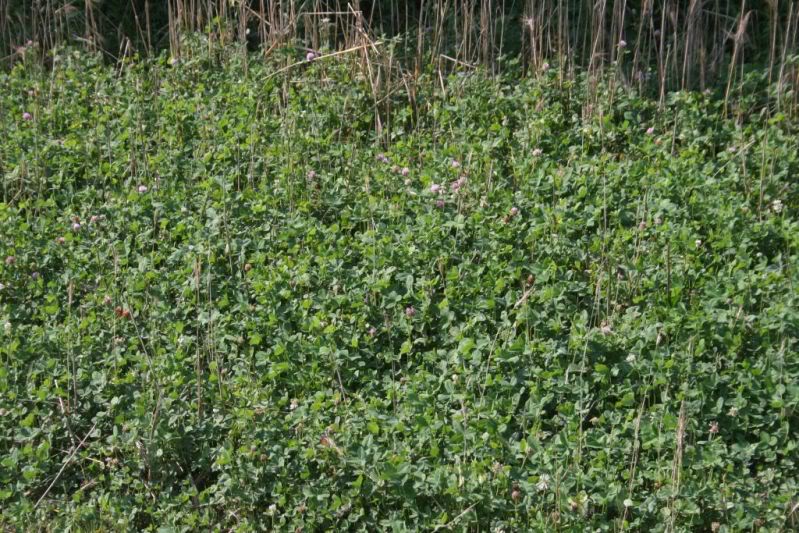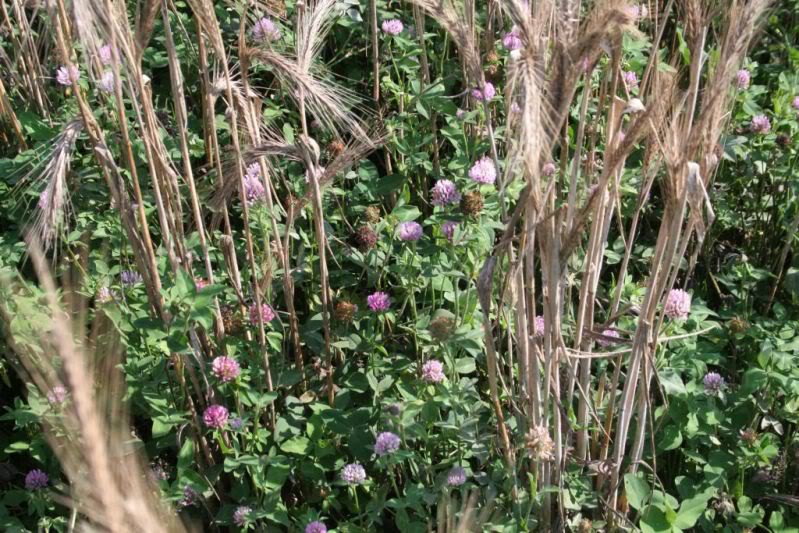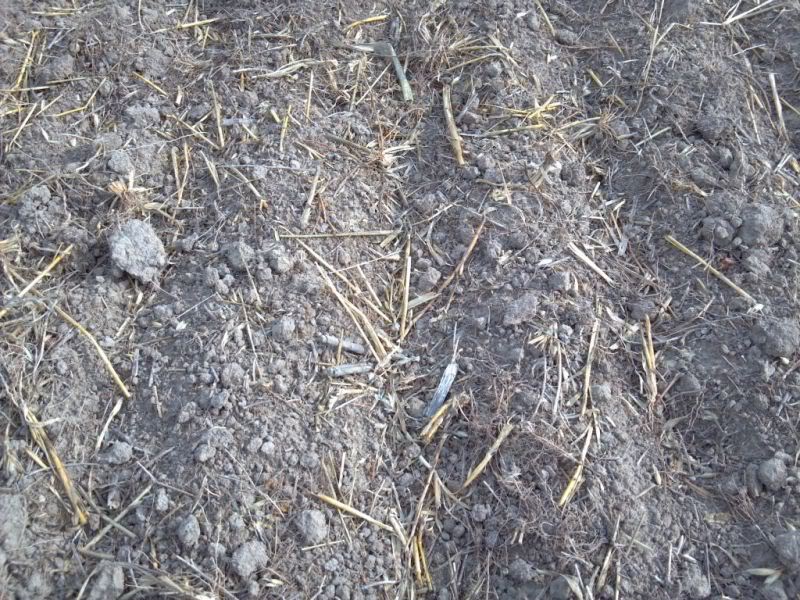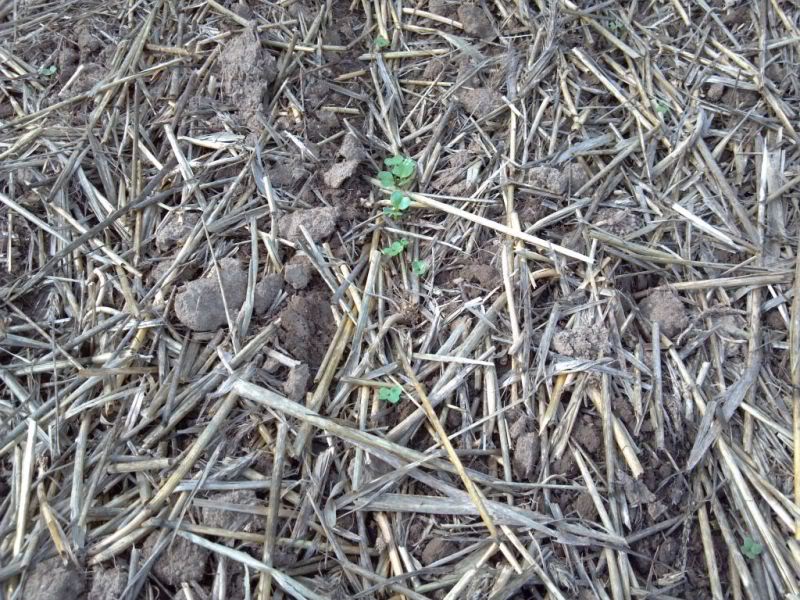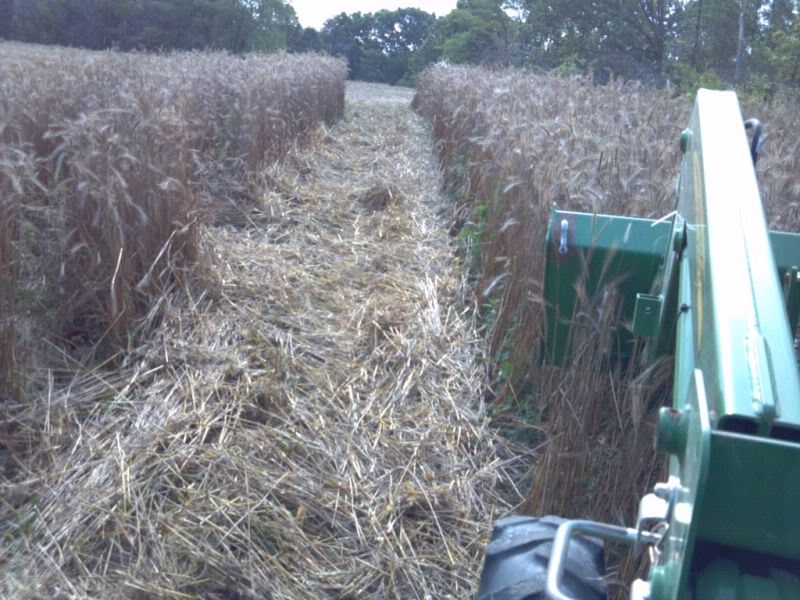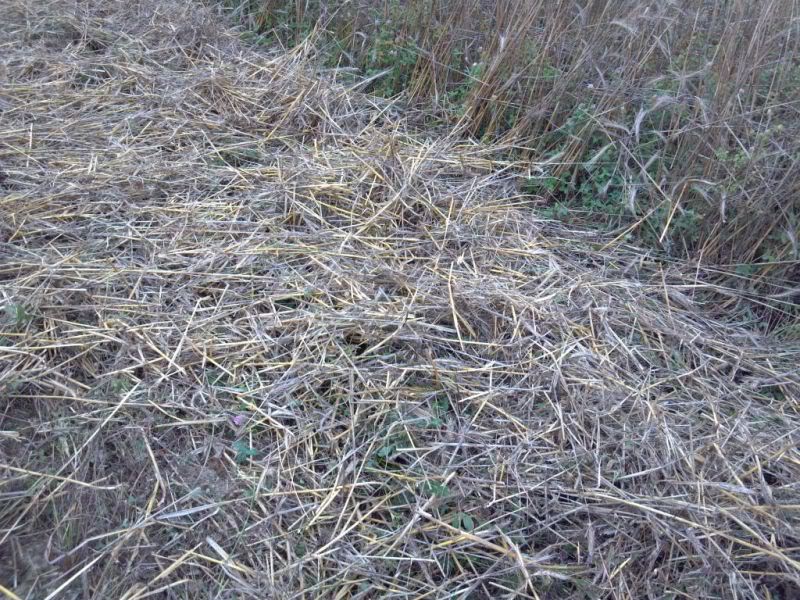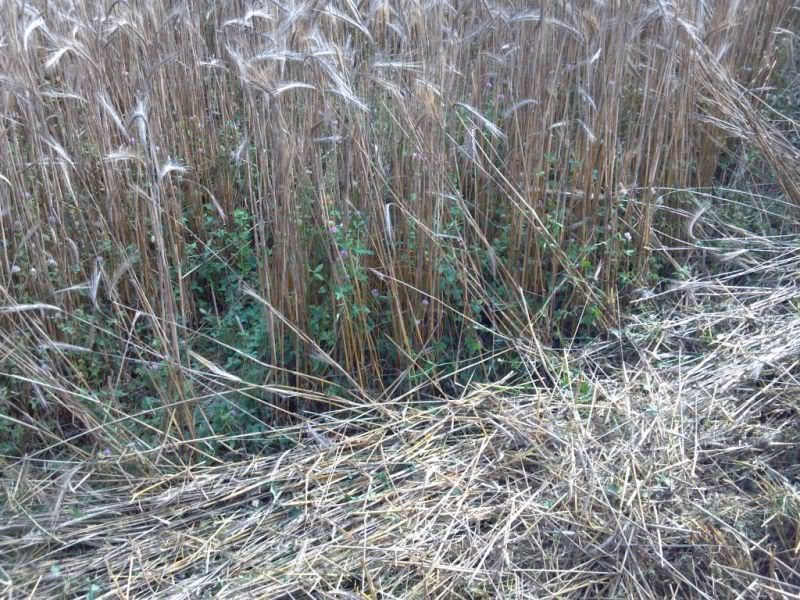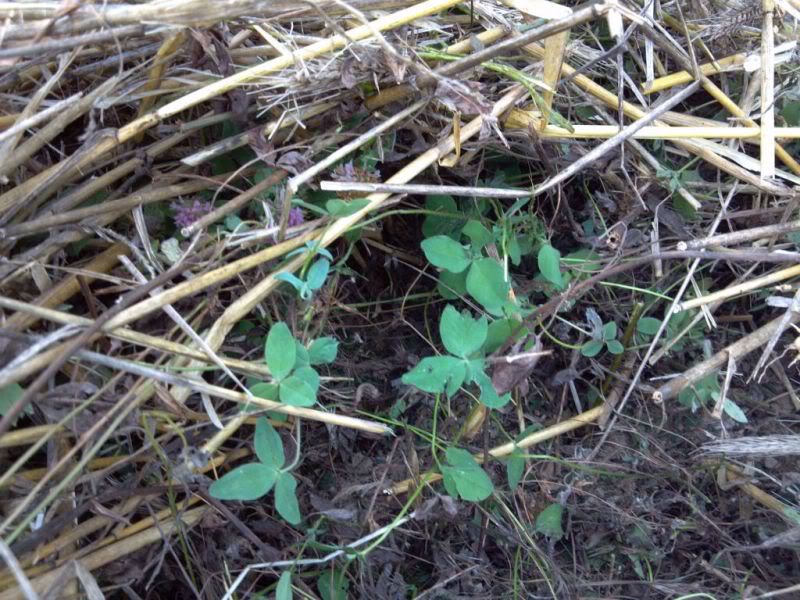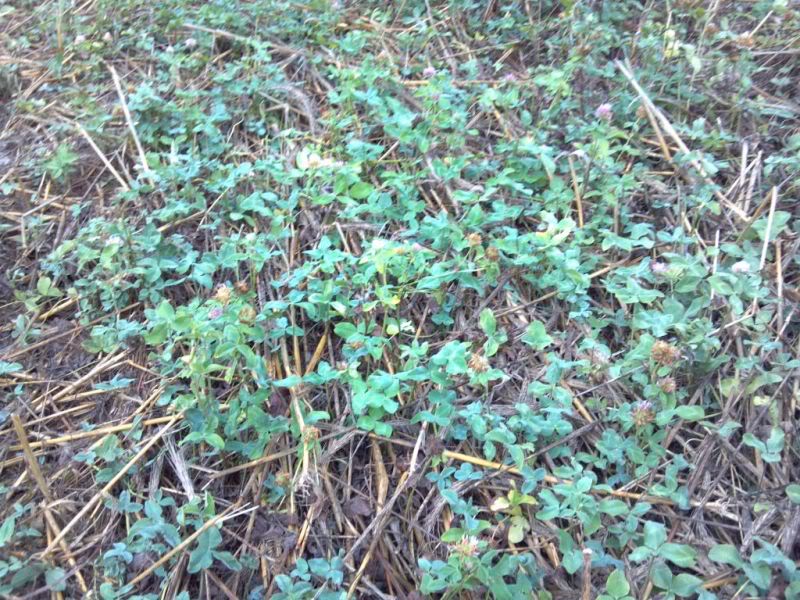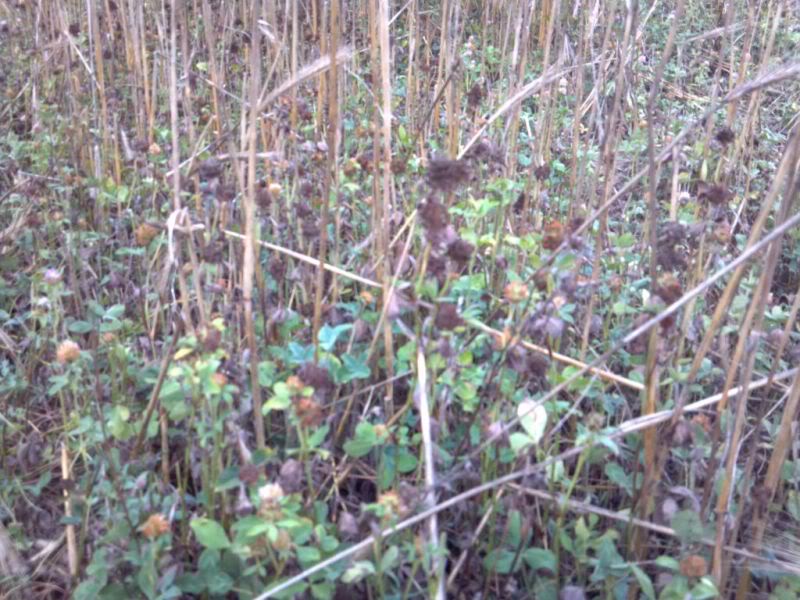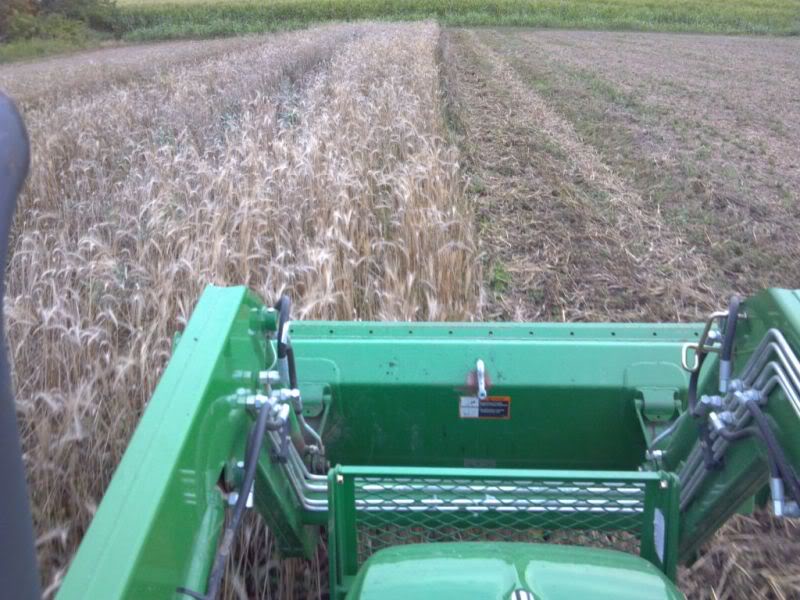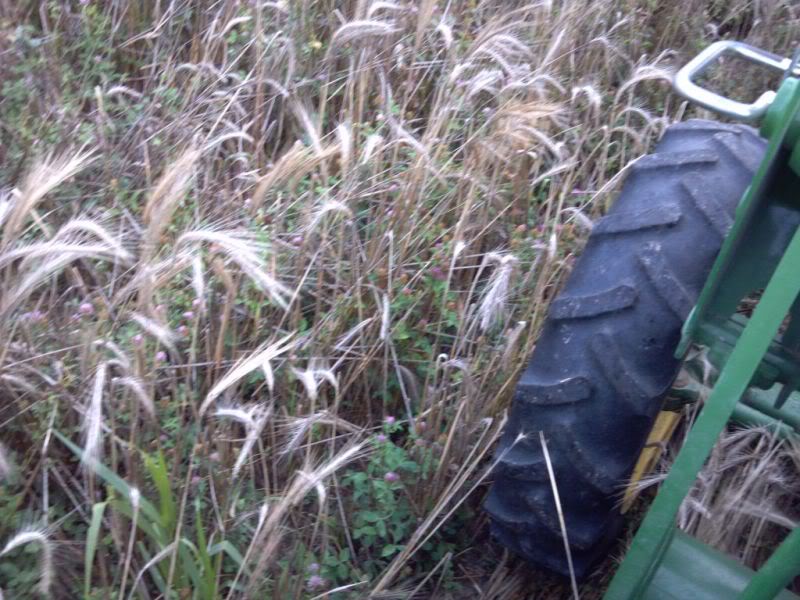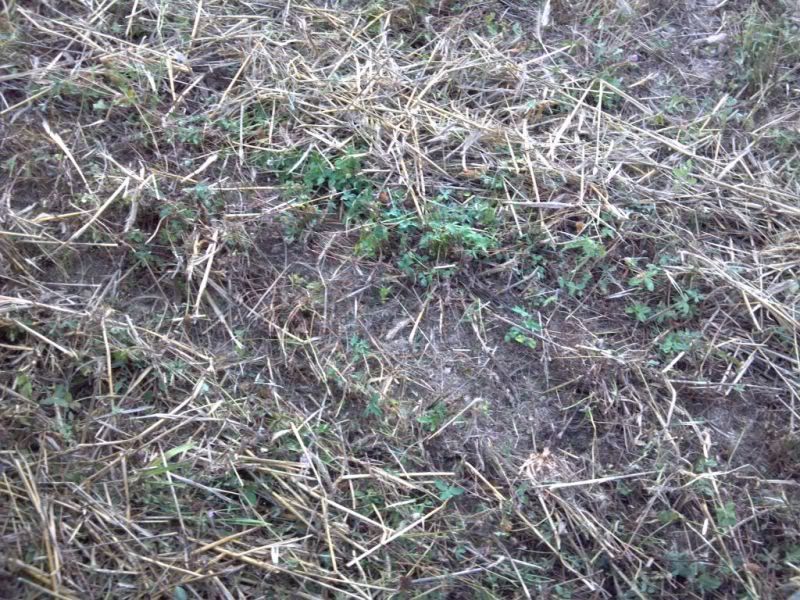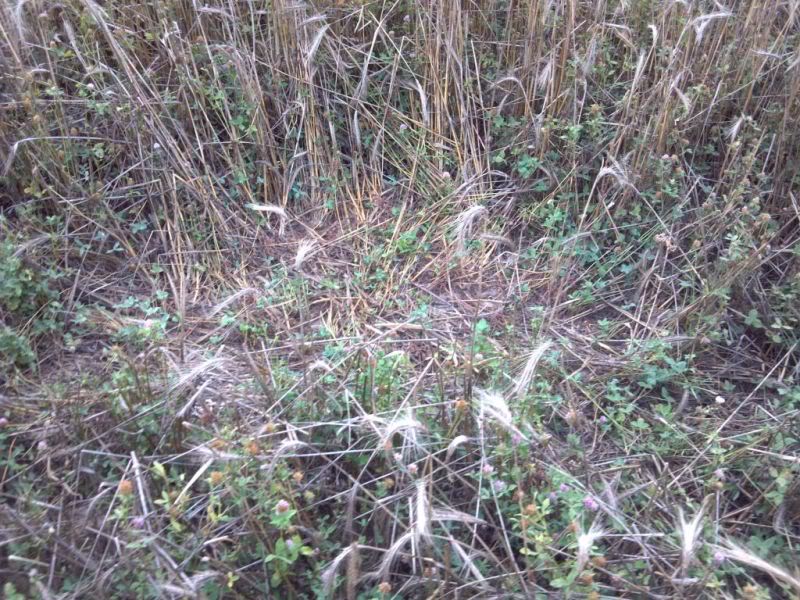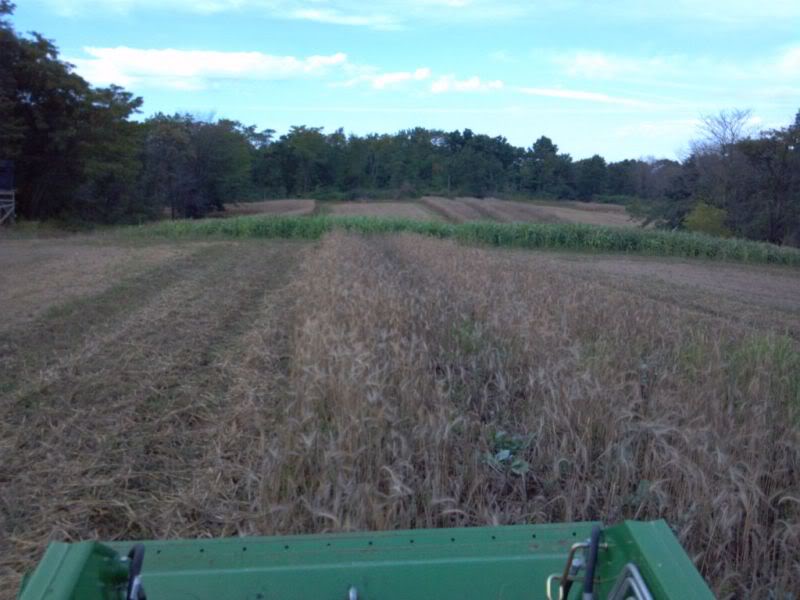Cover Crops
Virtually every crop you see in my crop combinations for whitetails also just happen to be used for....
cover crops that farmers use to vastly improve their soils in a variety of ways. It just so happens that whitetails love the very crops that build soils and increasingly farmers have learned to take advantage of these forages to graze livestock thru the fall, winter and early spring months.
Recently I had the pleasure of attending a Cover Crop Seminar put on by Green Valley Seeds in Kahoka, MO where I was able to listen to a number of university professors sharing their test results and on of those was Dr. Joel Gruver from WIU.
From that I will share just a few high points that came from the seminar and links to more information because on of the first things Joel shared was a slide showing the frequency of early summer droughts dating back to the 40's. Building organic matter helps farmers through drought periods, although in extreme cases failure is bound to happen regardless of how good the soil is.
Here is a link to a great number of Dr. Gruver's slide presentations for those interested in learning more
Dr. Joel Gruver's Slide Presentations
another interesting source of information where Dr. Gruver, Steve Groff and others post frequently is "Ag Talk" and the crop section can be searched to find relevant information "radish" " cereal rye" "cover crops" for instance...
Ag Talk
Yet another source for cover crop information is Plant Cover Crops.com where Dave Robison has put together a great amount of information and some awesome videos.
Plant Cover Crops
His videos can be found on YouTube under "covercropdave"
Covercropdave videos
The following are various links to articles and videos including a few from Dave's site and because many landowners may be involved in ag cropping their farm and utilizing manure, there are links on those subjects as well...note...
do not be confused by annual rye grass and cereal rye (winter rye/fall rye grain)...annual ryegrass is sometimes used by farmers but it is by an large not recommended for reasons I will share later.
Cereal Rye and Manure
Rye and manure
Cereal rye and radish
This one is great...cereal rye roots 40" deep and soybeans following them...no-till beans!
Cereal rye and soybeans
I love rye!
 Using rye, oats and brassicas in corn
Big Cover Crop Radishes--Are they good or not so good?
Radish and Crimson Clover Cover Crop Mix
Radish Pea Mixture Cover Crop excellence
Corn planted into Cereal Rye cover crop
Using rye, oats and brassicas in corn
Big Cover Crop Radishes--Are they good or not so good?
Radish and Crimson Clover Cover Crop Mix
Radish Pea Mixture Cover Crop excellence
Corn planted into Cereal Rye cover crop
There are reams and reams of information on cover crops and a zillion different experiences with each with positive and negative results across the nation much of which may or may not affect us when growing cover crops for deer. In other words we can hand seed/broadcast by hand seeds while crop farmers need to use aerial applications, high wheeled sprayer/spreader rigs, combine headers equipped with drop seeders etc etc. We can also simply "plant" our crops at the best time without having to plant them into standing corn and beans...so some problems are not a problem at all for us.
Of all the cover crops discussed, the one with the most problems was annual ryegrass...it produces little or sometimes no above ground forage (depending on variety and area planted), very little if any above ground biomass, is extremely difficult to kill (in some cases two applications of glyphosate did not kill it!!), winter kills and in general is like planting lawn grass in your food plot!
On the other hand cereal rye (winter rye) produced more above and below ground biomass then almost any other cover crop, produces tons of very palatable forage, puts down roots as deep as four feet and scavenges nitrogen...the last part being critical because while other cops scavenge N...they winter kill and release the N way before another crop can utilize them.
Cereal rye then is the backbone or main workhorse used in many cover crop programs both as a cover crop and a forage for livestock which is of course the reason I use it as the number one crop in my fall cereal mix.
Oats are a favored spring and fall forage crop by livestockmen because it produces a tremendous amount of high quality forage in the fall but will eventually freeze out and not have to be dealt with in the spring
Winter peas a nitrogen fixing legume capable of fixing a large amount of N and provide very high quality, very attractive forage at the same time. We will be using Frostmaster Winter Peas this year...FM is a white flowered, low tannin pea that is extremely sweet and attractive to deer and livestock.
Forage Radish much ado about radishes and as you can read in many of the videos and links, some of it is hype and competition for your business but in short one thing that was mentioned is that 1" radishes really were more productive in many cases then the "state fair" radishes that everyone likes to show off. In 45 days a radish plant can put down 40" of root but two things are critical...they must be planted in late August thru the 1st week of September to achieve any appreciable growth...those planted September 15th and later were usually a waste of seed money.
Secondly...radishes need a bare minimum of 20#'s of nitrogen to be able to have the energy to do what we hope they will...with no N, again they may achieve little for soils or deer. One method is to put at least 100#'s of DAP (Diammonium Phosphate) which is 18 percent nitrogen and 46 percent phosphate and kill two birds with one stone so to speak.
DAP Info
Red Clover a very common cover crop ingredient with farmers and some farmers have been growing corn on corn for years by aerial seeding red clover into standing corn, then drilling rye into the stubble in the fall. In my mix red clover is simply planted with the rye mix and does it's job by suffocating weeds the following spring, feeding deer thru the summer and all the time fixing nitrogen for the next crop of brassicas.
Crimson Clover a quick growing annual clover that also fixes a great deal of N and is very palatable to deer.
Turnips it is interesting that with all the hype about radishes, turnips actually scavenge more N and are an oft used cover crop component .
Hairy Vetch the king of nitrogen production and and outstanding addition to a cereal rye mix...perfect for a late spring planting of milo or corn!
Another point brought up is to always, always always...inoculate your legumes if you want maximum N fixation and growth. Even soybeans producers are finding out that there is a yield increase if they add inoculate so keep that in mind.
Over time, intensive use of cover crops has actually changed soil types...something that some old timers will argue vehemently is not possible but none of them have of course used cover crops for decades and compared before and after results.
Lastly the Midwest Cover Crop Council is a great resource for more info on various cover crops
MIDWEST COVER CROPS COUNCIL
from Daves web site...why plant cover crops?
Cover crops:
Improve soil health
Improve yield potential over time
Improve weed control of winter annuals
Reduce erosion
Increase earthworm populations
Improve soil microbiology
Build Soil Organic Matter
Produce and scavenge nutrients
Help you with manure management
Provide excellent grazing opportunities
Cover crop roots, along with the additional earthworms:
Increase soil organic matter
Increase soil porosity
Increase soil aeration
Increase “channels” for future row crop roots to follow
Reduce compaction
Increase nutrient recycling
All of that may help some of you better understand the reasons I use the following mixes to provide year around food sources and...build soils at the same time... :way:
Plant ALL in one plot in strips or blocks
Alice, Kopu II, Durana (or comparable) white clover 10% of plot, sow at 6#'s per acre with the rye combination in the fall or in the spring with oats and berseem clover. Correct Ph and P&K with soil tests
Brassicas in 45% of plot
Purple Top Turnips 3#
Dwarf Essex Rape 2#
GroundHog Forage radish 5#
Plant in mid to late July in most Midwest states, or 60-90 days before your first killing frost, Use 200#'s of 46-0-0 urea and 400#'s of 6-28-28 per acre. Follow the dead brassicas with oats and berseem or crimson clover in mid spring at 60#'s oats and 12-15#'s berseem clover and/or 50#'s of chickling vetch)
Cereal Grain combo in 45% of plot
Winter rye 50-80#'s per acre (56#'s = a bushel)
Spring oats 80-120#'s per acre (32#'s = a bushel)
Austrian Winter Peas or 4010/6040 Forage peas 20-80#'s per acre
Red Clover 8-12#'s per acre or white clover at 6#'s per acre (or 20-40 pounds hairy vetch and 20-30#'s crimson clover on sandy soils)
Groundhog Forage Radish 5#'s per acre
Plant in late August to early September, if following well fertilized brassicas use 100 - 200#'s of urea, if starting a new plot add 400#'s of 6-28-28
Rotate the brassicas and rye combo each year



